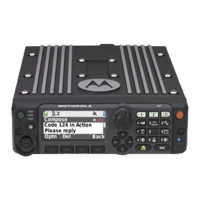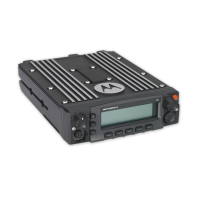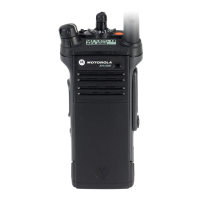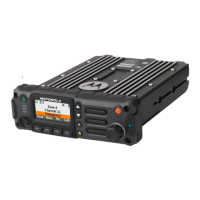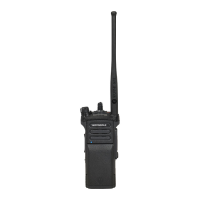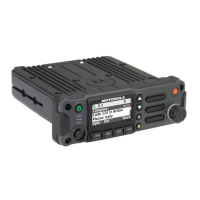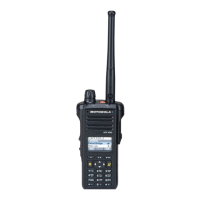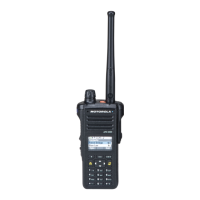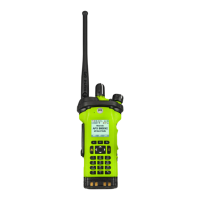3-66 Theory of Operation: Controller
As shown in Figure 3-54 above, the encryption design consists of 5 blocks:
• MACE IC
• Key Loading
• Key Retention
•Tamper
• Key Zeroize.
3.2.8.1 MACE IC
The encryption module uses the MACE IC and an encryption key variable to perform its encode/
decode function. The encryption key variable is loaded into the MACE IC, via the GCAI (side)
connector, from a hand-held, key variable loader (KVL). The MACE IC contains the particular
encryption algorithm purchased. Table x lists the encryption algorithms and their corresponding kit
numbers.
Once the MACE IC has its encryption keys and algorithm, it communicates with the radio' s host
processor (OMAP) through the Synchronous Serial Interface (SSI) bus. Both commands and audio
(clear and encrypted) are sent through the SSI bus. A communications failure between the host
processor and the secure module will be indicated as an ERROR 09/10 message on the display.
The MACE IC relies on a 4 MHz clock source provided by the CPLD, the clock is connected to
MACE's XIN pin (U5003-P5).
3.2.8.2 Key Loading / Fail
Key variables are loaded into the MACE IC through the keyfail line, which originates from the GCAI
connector and connects to MACE's KYLD pin (U5003-B10). This bi-directional data signal is level
translated from 5 V at the GCAI to 1.8 V at the MACE IC (through translator U4003).
3.2.8.3 Key Retention
The key variables are retained within the MACE IC's memory (SRAM or FLASH). The keys can be
infinite key retention or 30-seconds key retention, depending on how the codeplug is set up. When
set to infinite key retention, the keys are stored in the FLASH memory inside the MACE IC. When set
to 30-second retention, the keys are stored in SRAM, and will be erased when the radio's battery is
removed (after the 30 second delay). The key retention delay circuit controls this time through a
comparator op-amp circuit (U5006). When the battery is removed, VSAVE (nominally 2.5 V) will
eventually drop to 0V after 30 seconds, which will result in a 0V output from U5006. This output is the
input to the CONT_1.875 regulator (U5005), which is nominally 3.3 V. When the regulator's output is
0 V, the keys in MACE's SRAM will be erased.
3.2.8.4 Tamper
The tamper function is intended to erase the encryption keys in a tampering situation. If the radio
chassis is opened during operation, the tamper signal, which is normally connected to ground
through pogo pin P5001, will be disconnected from ground. This will be sensed by MACE through its
tamper pin TPRO (U5003-M2). Once this condition is sensed, the encryption keys will be erased.
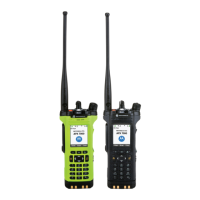
